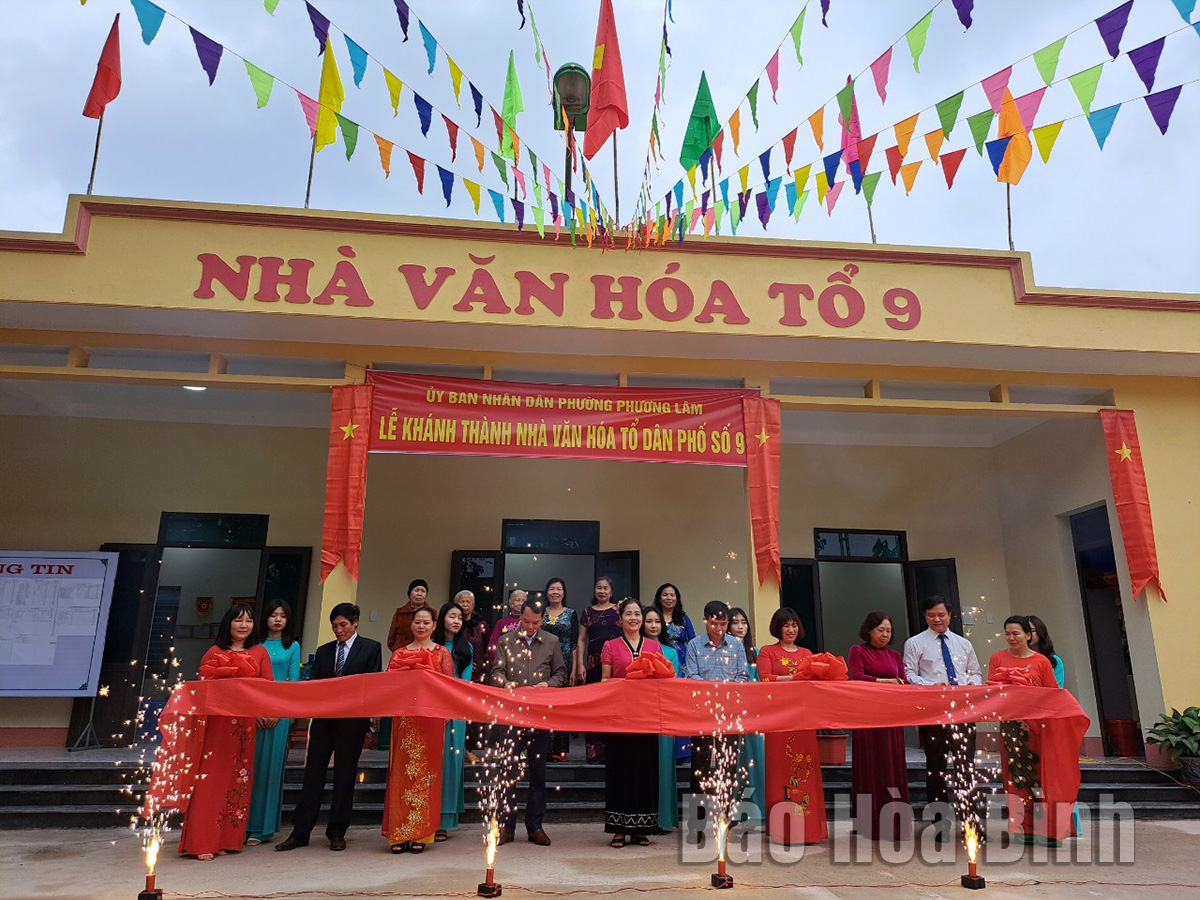(HBO) – After the re-organisation of administrative units, Hoa Binh city now has 195 houses of culture among its 208 hamlets and residential groups, which means 97% of the local residential areas have such centres. However, new requirements have arisen, requiring all-level Party committees and administrations to take strong actions to perfect grassroots culture facilities.
The culture house of residential group 9 in Phuong Lam ward, Hoa Binh
city, has been upgraded, meeting locals’ demand for cultural activities.
Over the past years, Party committees and
administrations at all levels in Hoa Binh city has paid attention to developing
culture houses which are viewed as important grassroots facilities of culture
in the building of a new lifestyle and socio-economic development.
However, after the re-organisation of
administrative units, the city's development is facing many new challenges.
Some residential groups in downtown wards have encountered difficulties in
zoning off land plots for culture house construction while many houses of
culture have become degraded.
Those problems were pointed out in Resolution
59/2019/NQ-HDND, issued on May 13, 2019 by the municipal People’s Council, on
financial support, building, repair, upgrade, and expansion of culture houses
of hamlets and residential groups in Hoa Binh city by 2025. Implementing the
resolution, since 2019, the city has built, repaired, upgraded, and expanded 16
culture houses at a total cost of over 3.17 billion VND (135,100 USD),
including 860 million VND from the State budget and more than 2.3 billion VND
from private sources and people’s donations.
According to the municipal People’s Committee,
the policy on comprehensively building culture houses for hamlets and
residential groups has received attention from all-level Party committees and
administrations, as well as support from social organisations, associations,
and people. Those facilities have met locals’ demand for community activities,
helping promote the "All people stay united to build new-style rural areas and
civilised urban areas” campaign, people’s spiritual life, and socio-economic
development.
Given the important role of culture houses, Hoa
Binh city has gained more political resolve to take stronger actions. In
particular, its People’s Council issued Resolution 49/NQ-HDND on December 18,
2021 to approve a plan on organising, converting, and reserving land for
building, repairing, upgrading, and expanding culture houses of local hamlets
and residential groups by 2025. It targeted that 100% hamlets and residential
groups will have culture houses, and 100% of the culture houses will meet local
people's demand for community activities by 2025.
Under this plan, funding for the building,
repairing, upgrading, and expanding culture houses will come from the city’s
budget, people’s donations, private sources, and other legal sources. The city
is set to provide about 64.33 billion VND for the work between 2022 and 2025.
Nguyen Thai Hoa, head of the culture and
information division of Hoa Binh city, said this policy has met people’s demand
for community activities, thereby helping improve local residents’ spiritual
life and contributing to socio-economic development. However, certain
difficulties haven’t been addressed, requiring the city to continue strong
measures to obtain fruitful results.



